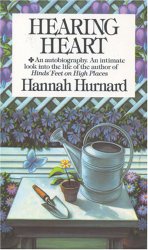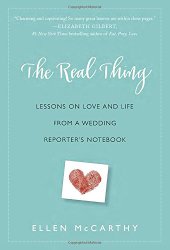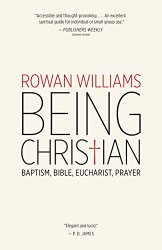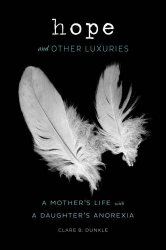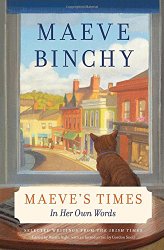Review of Did God Kill Jesus? by Tony Jones
Searching for Love in History’s Most Famous Execution
by Tony Jones
HarperOne, 2015. 295 pages.
Starred Review
This book has a provocative title – at least for Christians. Jesus’ death is central to Christianity. What, actually, does it mean?
Like the author, I was brought up with the “payment” explanation of Jesus’ death – essentially that we are sinners and God hates sin – and Jesus, the sinless sacrifice, had to save us from God’s wrath. I’ve heard it preached that this is essentially the gospel. But I’ve also heard stories, explanations, and analogies of this view that get a little bit horrible if you think about them too hard.
It turns out that the reason for Jesus’ death preached at that middle school retreat. . . is not the only way that Christians have understood the death of Jesus. Instead, it’s one of about half a dozen theories that preachers and theologians have used over the past two thousand years to explain why Jesus died. This fact wasn’t advertised to me when I was growing up. Instead, I was taught that there was one and only one reason that Jesus died: because of my sin and God’s anger and disappointment with me. Maybe you were told the same thing. But this sentiment would have been confounding to a second- or third-century Christian. They had entirely different ways of understanding Jesus’ death, ways that we will explore in later chapters.
And behind each explanation of the crucifixion is an implied view of God. God is either strong or weak, in control or abdicating control, engaged or absent, gracious or vindictive. In the pages that follow, we will walk through the various views of Jesus’ death, and we will look at the God who stands behind the cross in each.
For myself, my reading in George MacDonald’s writings is what got me first to even see there might be another way of looking at the cross. This book goes into detail and examines the many different ways Christians have, over the centuries, looked at the death of Jesus. It turns out that the “payment” model wasn’t taught in the church until hundreds of years after Jesus’ death. And now we’re told believing this is the only way to be saved?
Here’s a section from the introductory chapter:
Even without the Bible, what kind of sense does it make to believe that God would create you and me, only to be disgusted by us and wrathful at our inevitable shortcomings? But add in the Bible, and you can really see how misaligned this interpretation of the crucifixion is. If we look in the Bible for evidence of this overwhelming disgust God has for us, it’s hard to come by. Sure, there’s the occasional verse that talks of God’s anger at particular sins or human behavior that God considers an abomination, but the overarching message of scripture is clear: God created us, God loves us, and God wants the best for us. In fact, the Bible is rife with stories of God going out of his way to set people on the right path – despite our failures, despite our sins. Indeed, the Apostle Paul assures us that God loved us “while we were still sinners.”
Before we study the Bible and even before we formulate and wrestle with all the doctrines from church history, we intuitively know something fundamental: the message of Jesus, God’s primary emissary, is that God loves us. That’s what Jesus came to preach and to enact in his miracles. He referred to God as his “Father” and his “Abba” – intimate terms based in relationship. Theirs was a close and loving connection. Jesus came to open that loving relationship between himself and the Father to all of us. This event, the crucifixion, on which all of cosmic history pivots, forever changed both us and God.
This also means there can be no separation between God and Jesus; we cannot set a wrathful and vengeful God in opposition to a loving and gracious Jesus. Jesus repeatedly taught that he and the Father are one, that the best way to know and understand the Father is by knowing and understanding the Son. And the main message of both Father and Son is that they love us and want to be united with us. Even before we come to understand what happened on the cross, we know that whatever explanation we discover cannot contradict the eternal relationship of love that binds the Father and the Son, that binds God and us.
This is a book on theology. The author does what he suggests here – looks at all the doctrines about the cross from church history.
I suspect that as we journey through the history of thought about Jesus’ crucifixion and look at the biblical accounts of that event, we will find a God who is not wrathful or disgusted. We won’t find a God who killed his son, nor demanded that his son be executed to pay a penalty. Instead, I suspect that we will find a God of love who goes even to the most extreme lengths to identify with the human experience and to build a bridge between the human and the divine. We’ll find a God who wants nothing more than to communicate his love to us.
I like his “smell test”:
Research shows that those who believe in a wrathful God are more likely to suffer from depression and anxiety disorders than those who believe in a loving, merciful God. Our beliefs really do have consequences, for they structure how we live.
I tend to be a pretty logical person. I like debates, reasoned arguments, and rigorous thinking. But after many years of searching and studying the ways of God, theology, and the Bible, I’ve concluded the following:
Bad theology begets ugly Christianity.
Good theology begets beautiful Christianity.
I call it the smell test. It’s an aesthetic argument. Like me, you’ve probably pulled that half-gallon of milk out of the back of the refrigerator, seen that the “best by” date is long past, and cautiously waved the open bottle under your nose. The result is either, “Smells fine to me!” or a sour stench strong enough to strip the bark off a tree.
That may seem an odd way to measure a faith system. We are used to matters being true or false, right or wrong, not beautiful or ugly, sweet or sour. Most prefer a more forensic approach: she who has the most logical doctrine wins. But, as we will see in the pages to come, many religious systems that are perfectly logical are nevertheless downright ugly. They’re bad for the world and bad for people. In other words, you can devise a system of doctrine that makes perfect sense within its own little self-inscribed world, but when you take it out into the broader marketplace of ideas, it spoils, like dropping a teaspoon of vinegar into a gallon of milk.
In the main section of the book, the author looks at historic interpretations of Jesus’ death within the church (and there are many). And he asks six questions of the various models:
What does this model say about God?
What does it say about Jesus?
What does this model say about the relationship between God and Jesus?
How does it make sense of violence?
What does it mean for us spiritually?
Where’s the love?
It turns out, these are some good questions to ask. This is a book that explores, and a book that thinks deeply.
I recommend this book for Christians who want to think about their faith. For those who think there is only one way to think about the crucifixion, perhaps it will open your eyes. And whether you end up agreeing with the author or not, it offers many perspectives and many things to consider. If nothing else, it will get you thinking about God’s love and grace.
If you’re not a Christian, but you feel you’ve been burned by Christianity or Christians who have taught you that God is angry with you – I also recommend this book. Perhaps you’ll be able to more clearly see God’s great love for you and God’s identification with humanity in Jesus. If nothing else, perhaps this more loving communication of Christianity will be healing.
Here’s a section from the last chapter:
Of the mystics in the history of the church, many like Brother Lawrence spent a great deal of time meditating on the crucifixion. In the climax of the great twenty-eight-day retreat called the Spiritual Exercises of Saint Ignatius, the person on retreat meditates on Jesus being crucified, even having an imaginary conversation with Jesus as he hangs on the cross. While this may strike our modern sensibilities as gruesome or strange, now that we’ve come to see the humility of God on display in Jesus and the solidarity that God showed to humankind, we can understand how the cross can become a peaceful meditation, the moment of God’s ultimate presence with us.
The English mystic Julian of Norwich also meditated on the crucifixion. She dared not look up from the cross, she said, “For I knew that whilst I looked at the cross I was secure and safe.” When she looked at Jesus on the cross, she experienced God’s presence. It is ironic: looking into the eyes of a man being executed and feeling peace, safety, security, even tranquility. But it is possible because the crucifixion is God’s ultimate act of love.
We have something to learn from these old mystics. The crucifixion is a source of peace. It’s a magnet that draws us into the all-encompassing love of God. It’s a mirror that shows us the result of all our violent tendencies. It’s a spark that relights the flame of divinity within us. It’s a symbol of God’s victory over the forces that oppress us.
We look into the eyes of the dying savior knowing that in him, God performed the ultimate act of humility. In the abandonment of Jesus’ cry, God experienced the godforsakenness that every human feels. And a new bond was formed between God and humanity – a bond that is now cemented by God’s Holy Spirit.
I like this book. The author does show some drawbacks with the Payment Model of Jesus’ death, but I don’t think this book is primarily about showing drawbacks. It’s about shining a light on the cross, about thinking deeply about the cross and what it means about God, what it means about Jesus, what it means for us spiritually, and how it’s all about love.
Find this review on Sonderbooks at: www.sonderbooks.com/Nonfiction/did_god_kill_jesus.html
Disclosure: I am an Amazon Affiliate, and will earn a small percentage if you order a book on Amazon after clicking through from my site.
Source: This review is based on a library book from Fairfax County Public Library.
Disclaimer: I am a professional librarian, but I maintain my website and blogs on my own time. The views expressed are solely my own, and in no way represent the official views of my employer or of any committee or group of which I am part.
What did you think of this book?

